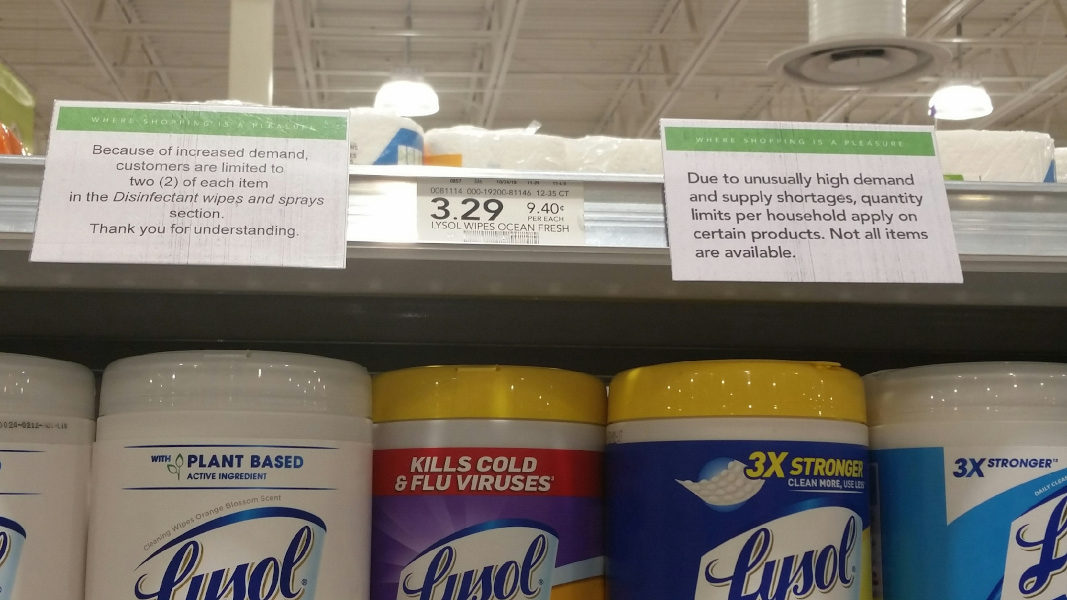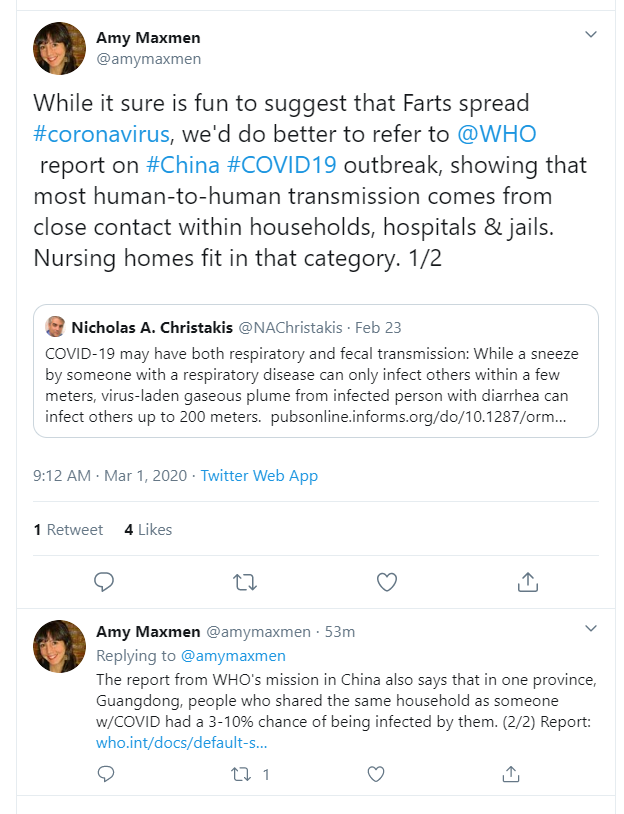Unless you have been living under a rock for the last couple of months, you have undoubtedly heard about COVID-19, a new type of coronavirus. In a daily report from the World Health Organization for March 9th, there are close to 110,000 reported cases worldwide. Sadly, the virus has claimed the lives of just over 3,800 individuals, mostly in China.
In the U.S., 213 individuals have been confirmed to have the virus, with 11 of these proving fatal. Most of these cases involve people who recently traveled to China.
Although COVID-19 is nowhere near as deadly as the annual flu season (…at this time), the unknown origins of the illness and the speed at which it spreads is a cause for concern for the WHO, the U.S. Centers for Disease Control (CDC), and similar health organizations…the WHO declared a “public health emergency of international concern” on January 30th following the initial outbreak in Wuhan, China.
Fears about the virus are wreaking havoc around the world…
As of this writing for instance, the Dow Jones Industrial Average is down 1,800 points, its worst daily decline since the financial crisis in December 2008. Numerous travel restrictions are in place, flights have been suspended, travel plans called off, and events like the annual St. Patrick’s Day festivities in Ireland and the long-running SXSW in Austin have been cancelled. Risk management and insurance groups are evaluating how to proceed with their events.
Like other past crises, there is much hype and panic swirling about. This picture taken the morning of March 9th at my neighborhood grocery store is case in point. Although there have been 12 reported cases in my home state of Florida, none of those have been in my hometown of Tallahassee.

Reporter Amy Maxmen from Nature provides this dose of sanity following reports that COVID-19 can be transmitted through flatulence – I wish I was joking, but I’m not…

What should organizations be doing to prepare and handle COVID-19?
Now I’m not mentioning this to disparage concerns about the virus. Since we don’t know a lot of about it, precautions need to be taken. These include common sense measures like hand-washing, staying home if you’re sick, and so on.
Your company could experience supply chain disruptions, especially considering the number of products exported from China. This of course can lead to product shortages.
If your company specializes in any products or raw materials connected to testing and treating the virus, are you prepared? Are employees prepared to work from home should the need arise? Should you consider cancelling or postponing any trips that involve flying or meeting large numbers of people?
It’s hard to say with any specificity what, if anything, your company should do – it really depends.
However, this is taking a very risk-centric approach, or as Norman Marks explains in this article, “the management of a list of things that might go wrong.”
Risk managers and organizations in general must reframe this situation into how it will impact the organization’s success. Instead of managing potential negatives, how can you make informed decisions about responding (…or not responding) to issues like the COVID-19 outbreak?
In a comment to Norman’s article, another risk management thought leader, Grant Purdy, states:
Deriving a better understanding of our vulnerability is quite simple and involves asking the two questions (in relation to an event such [as] the Coronavirus pandemic) of: “To what are we vulnerable?” and “How are we vulnerable?
Once the ‘to what’ and ‘how’ of vulnerability has been appreciated, we can make adjustments to that vulnerability if this is necessary to ensure we have sufficient confidence in decision outcomes.
Grant goes on to make an excellent point about the Coronavirus outbreak. To most people, even in the risk management field, this issue and others like it are only about loss and harm.
However, disruptions like Coronavirus also present new opportunities as well. Grant explains this can happen in one of two ways – either the event changes something that constrained a previous decision (i.e. employees need to travel to work in our office each day) or the event could make something that was desirable but impracticable now possible (i.e. giving employees tools to work remotely results in more efficiency, productivity, and better communication).
While COVID-19 is something to be concerned about, how it impacts you and your company will vary based on a variety of factors like geography, industry, etc.
But instead of just focusing on the potential harm, it’s also important to examine how this situation creates opportunities to make your organization more successful. As Grant concludes in his comment:
…a mindset aimed at returning to things as they were might be the very last thing to aspire to. Instead, a carpe diem (seize the day) approach offers a better strategy…
Is your organization feeling any impacts from the COVID-19 outbreak?
Are there any opportunities that were once impracticable now possible because of the outbreak?
As always, I’m interested in hearing your thoughts on the topic of disruptions and opportunities. Please don’t hesitate to leave a comment below or join the conversation on LinkedIn.
If your organization is unsure how to best respond to COVID-19 or other disruptive events, contact me to discuss your specific situation today.








